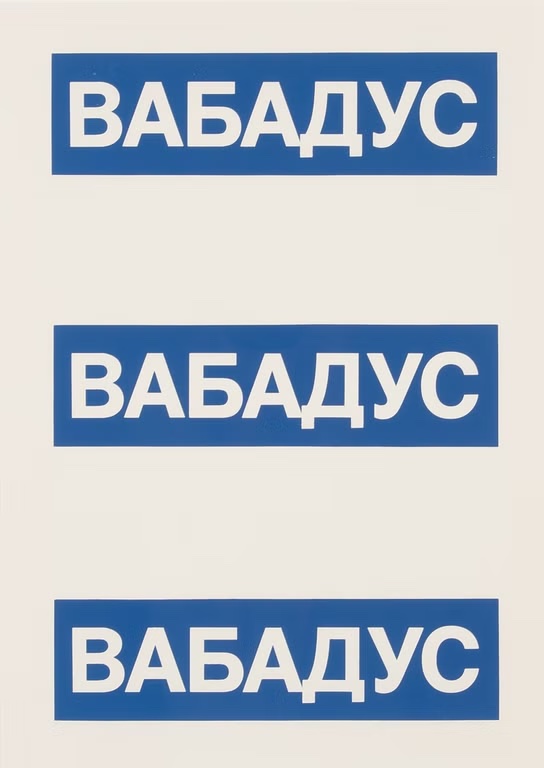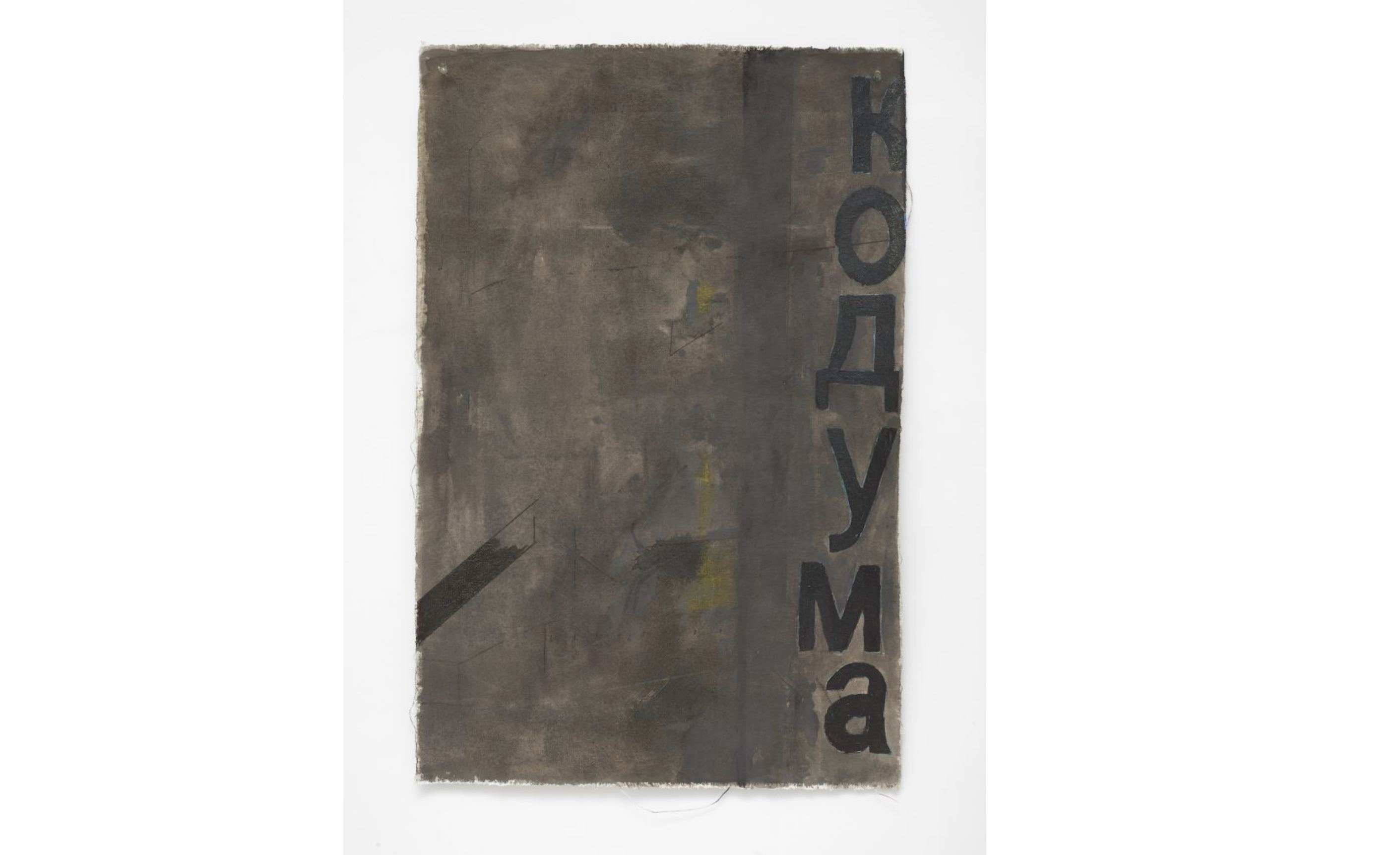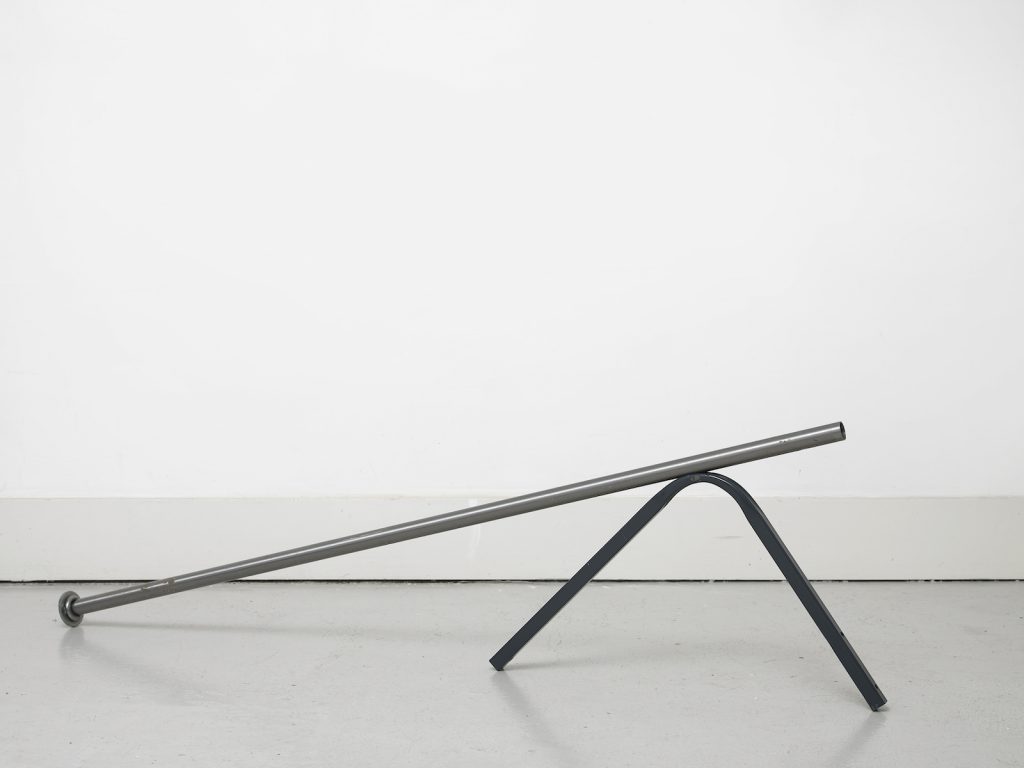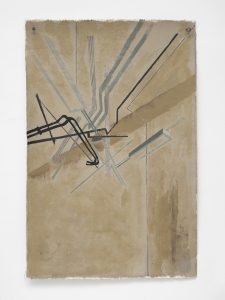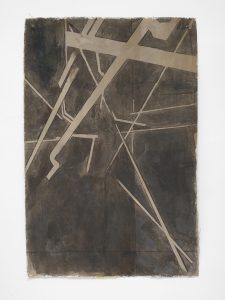For this Online Viewing Room Galerina presents a new series of abstract paintings on unstretched canvases together with a sculpture by Gretchen Lawerence & Margaret Tashkova. Lawrence & Tashkova’s work is a study of translation and reconstruction. The abstract paintings hide references to post-Soviet architecture in the midst of restructuring from the state communism to free market capitalism. Legendary buildings and sites carry the aura of abandonment and aesthetic incompatibilities. Angular lines of concrete ridges, characteristic of Soviet-era modernism are replaced by curves and undulating metal facades of the 21st century shopping malls. For the first generation to be brought up after the fall of the USSR in the early 2000’s, these sites have become a playground for conjectures and transference.
Lawrence & Tashkova plays with subcultures and movements by delocalizing sounds, objects, clothes or movements. The paintings are on unstretched and unprepped canvases – something that has often signified protest art. Here the visual history can be traced back to Russian Revolutionary art and posters from early 20th century. The overlap is not only in form but also subject matter. Take El Lissitzky’s Prouns for example – the inspiration behind the work was drawn from architecture rather than art history itself, in search for novelty. Lawrence & Tashkova carries a similar agenda of paraphrasing based on a variety of references, informed by the contemporary metropolitan reality.
The paintings are designed to be moved around, rolled up, nailed onto walls. Lawrence & Tashkova objectifies the work yet not giving away into what it is supposed to be – creating an isotype of her own. The materiality of abstraction is brought into a form through sculpture, working with found objects and metal, the Swan rests with her head down.
Gretchen Lawrence & Margaret Tashkova, Swan, 2024
Lineup (2023) reads КОДУМА, a сyrillic transcript of the Estonian word Kodumaa, meaning homeland. ЭСТИМА КОДУМА [Estonia, Homeland] was a tag across the city of Tallinn in early 2000s, reflecting the national identity struggles of the local Russian-speaking minority under scrutiny from nationalists since the independence from the USSR. Translations that seem inelegant invoke visual signifiers used by a post-war Estonian artist Leonhard Lapin, where the Estonian for freedom [Vabadus] reads in cyrilic caps: ВАБАДУС. Symbols in Lawrence’s work play with the signified. Across the work the same letters, words and visuals change their command and what they stand for. A continuous change through time, nations, people and names, identity and ideology without necessary direction.
Leonard Lapin, Vabadus Vene moodi (Liberty in a Russian Way), 1989
Gretchen Lawrence & Margaret Tashkova, Lineup (Static), 2024
Gretchen Lawrence & Margaret Tashkova, Lineup (2007), 2024
Gretchen Lawrence & Margaret Tashkova, Lineup (2004), 2024
Gretchen Lawrence & Margaret Tashkova, Lineup (2006), 2024



